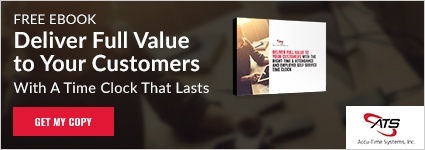Nearly all SaaS challenges can be traced back to the fact that new players are constantly coming on-scene. The “2016 Report on the State of SaaS” issued by Better Buys found that 1400 new SaaS platforms went live over the past five years. It doesn't matter what niche you're in, your competition is fierce.
The report, which analyzed the SaaS budgets, uses and plans from over 4000 companies, also
found that 78% of the companies intended to increase the number of SaaS tools they use. It also projects that the average number of SaaS tools used by small and medium businesses will go from three in 2016 to seven by 2020.
That's the good news. Companies clearly have gained confidence in SaaS security. They're ready to take advantage of SaaS best-of-breed functionality and smooth user experience.
Rising above in a crowded marketplace
Getting noticed remains the first of the SaaS challenges. While technology advances have made the entire SaaS world possible, it’s also created an entirely new way to market yourself to your target audience. Online content marketing provides a huge opportunity for companies to share their knowledge on how their prospects can improve their operations and bottom line. From blogs to webinars to ebooks, smart SaaS companies attract prospects and users by establishing themselves as experts and authorities in their space.
At the first stage, it isn’t even about distinguishing your offering from your competitors. It’s about becoming the resource they turn to get their questions answered, like advice on how to build a management leave policy. It’s much easier to become a trusted vendor if you’ve become a trusted resource first.
Showing your value to get the sign-up
The tool’s features and functions are important. Yet it’s hard to distinguish yourself from your competitors if your sales team or pre-sales engineers rattle on about lists of features. A SaaS shows its value when it shows prospects how it solves their problems. A SaaS shows exceptional value when it opens prospects’ eyes to unknown opportunities like how using its platform can add value to their own businesses.
There’s one other critical way a SaaS needs to show its value. Users expect SaaS platforms to be active partners, providing technical support, ongoing education, and consultative guidance on how to optimize their use. Prospects, or freemium users, are assessing every interaction they have with your team, from customer service to tech support. These interactions are seen as harbingers of what they can expect if they’re a paid user. So always treat prospects as if they are. A SaaS’s distinguishing business value isn’t just as a software, but also as a service.
Innovating with speed
There’s too much competition to let your platform development stand still. User needs and industry pressures are constantly evolving. A SaaS platform must continue to evolve along with them. Quickly developing and rolling out new functions or improved user interfaces is critical to maintaining your position as an innovative partner that provides clear business value.
One way to speed up a go-to-market innovation is through expanding your offering to include peripherals that enhance the business value of the software. This could be hardware, like offering employee time clocks that have proven, stable integrations and extend the SaaS functionality.
Managing the churn
Short-term sales aren’t a recipe for SaaS success. Limiting user churn is a perennial issue that needs constant attention. Experts can cite all sorts of reasons for churn and strategies to maximize membership retention. Even so, the best place to start is to go to the source. What reasons are your users giving for leaving? What issues, complaints or requests come in most often to customer service and tech support? You can’t devise the right retention strategy without understanding specifically why people leave your SaaS platform.
It’s a great time to be a SaaS provider!
These common SaaS challenges aren’t going away. Don’t stress over them (not too much anyway). Embrace them. The creative, responsive, innovative SaaS providers are the ones who’ll stay around for the long haul.
Interested in learning how to make your workforce management, payroll or time and attendance software business more competitive? Download our free eBook “Deliver Full Value to Your Customers”.




